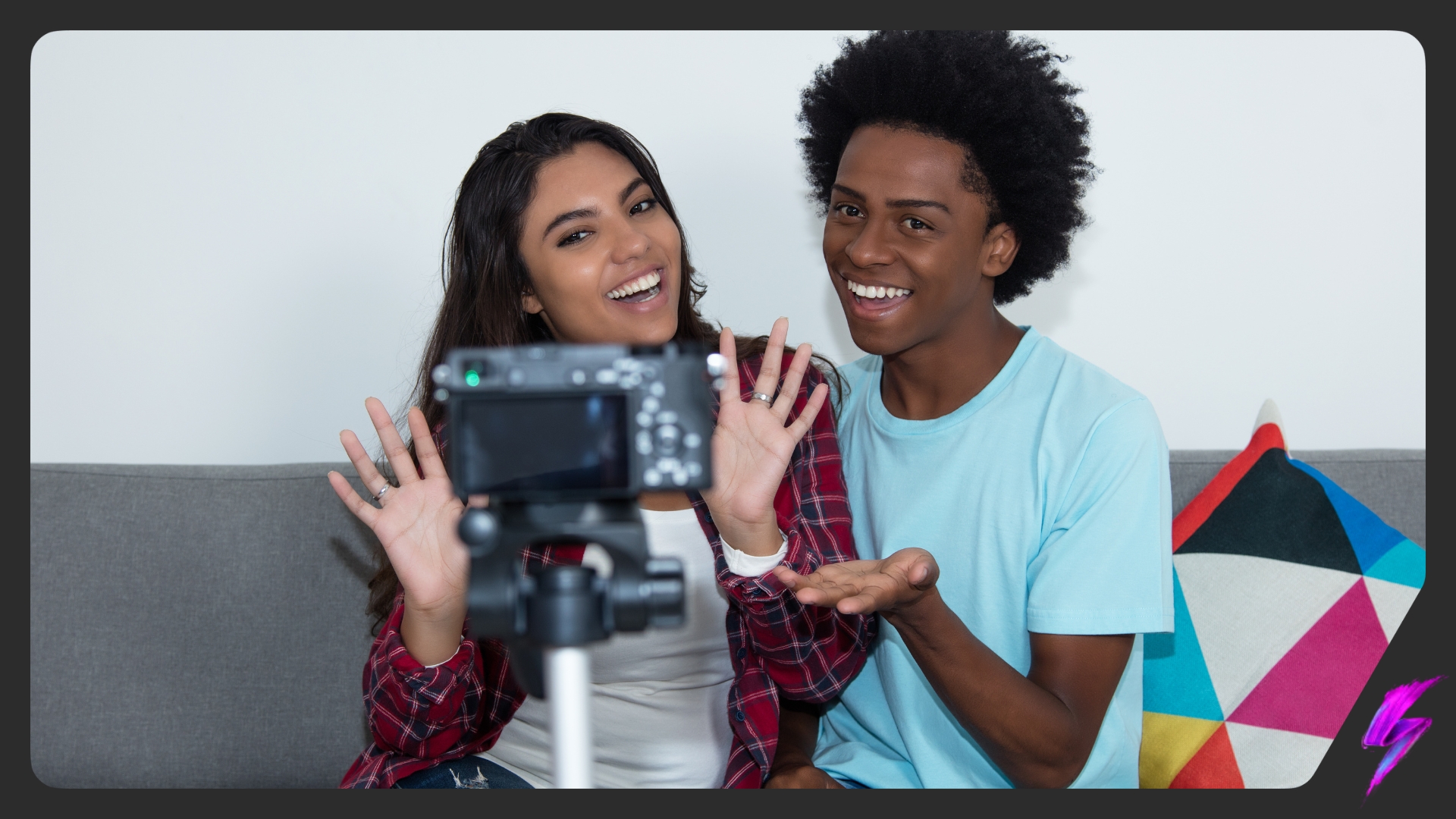There’s A New Surge In Social Media Messaging. How Are Brands Keeping Up?
Oct 03, 2023
Social Media Platforms
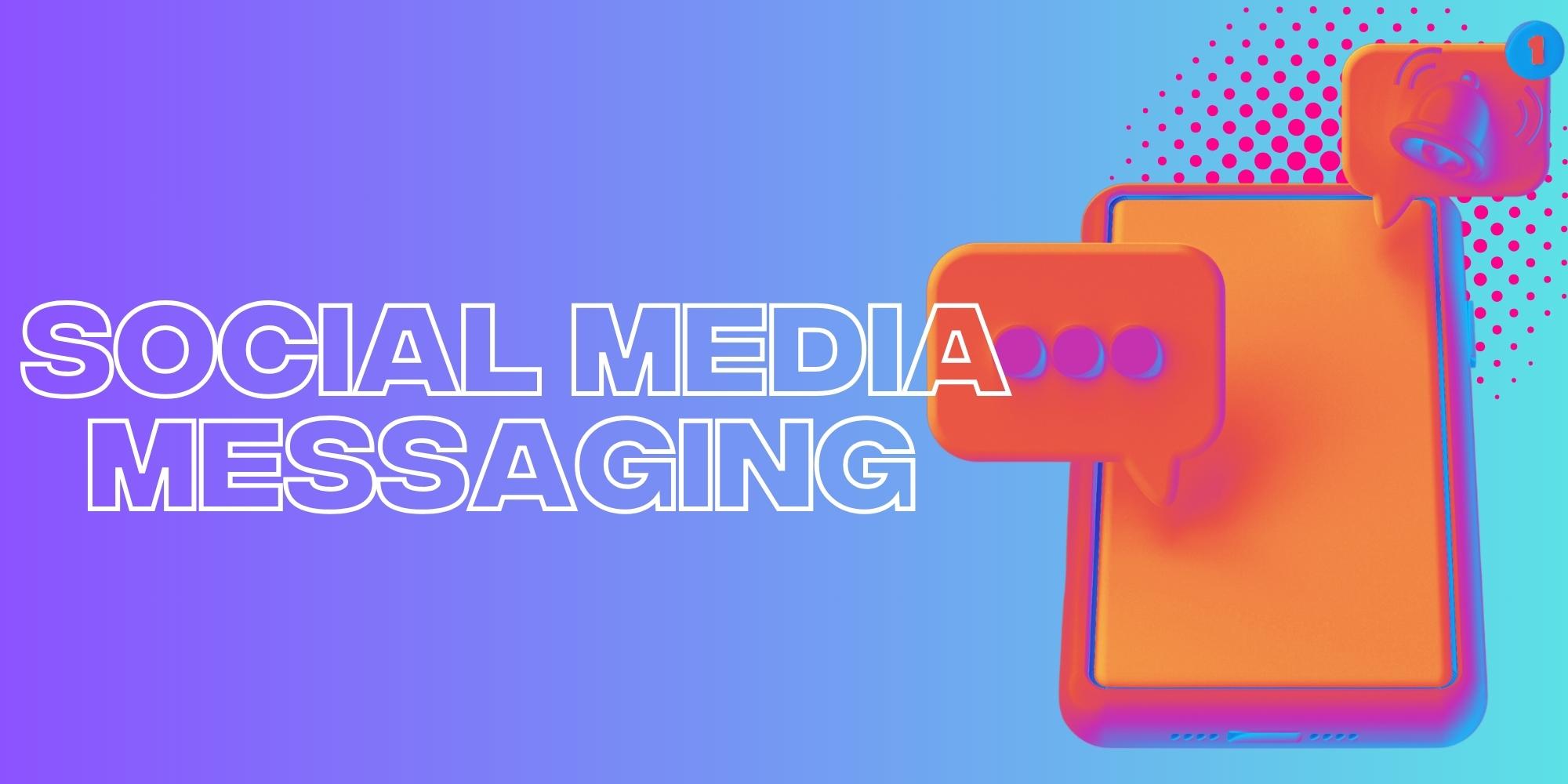
Is short-form video dead? Not quite.
It is, however, quickly being tailgated for the no.1 spot by the surge in new social media messaging tools offered by established platforms.
In order to keep up with the shift in user behaviour, many platforms have upped their messaging game—WhatsApp has launched Channels, Meta is hosting its second annual Conversations event and TikTok is gearing up to become the most powerful messaging system out there.
But where has this sudden focus on messaging tools stemmed from?
On a landscape as ever-changing as social media, shifts in trends, user behaviour, platform hierarchy and much more is inevitable. The latest shift to occur? The nature of conversations. Specifically, the increased demand for more private sharing options.
How many times have you felt an urge to post something, typed it out, but then realised it might not be worth it? What if it causes a heated debate in your comments section? Do you have the capacity to wade into an argument with strangers?
Oftentimes a creator’s answer to these questions is no and we can see why. Too many social media platforms have become the hub for political and topical discourse that often leads to arguments. As a brand, influencer, or even an enthusiast of that platform, it can become a little tiring having to battle with the back and forth that can come with public posting. This is pushing more people towards private sharing.
Now that this behavioural shift regarding social media messaging is imminent, what are platforms doing to house it?
Meta
We’ve already seen increased efforts by Meta to lean into the potential of engagement within social media messaging with the introduction of Broadcasting Channels on Instagram and the reintegration of Messenger within the Facebook app.
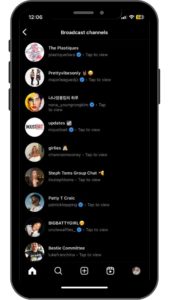
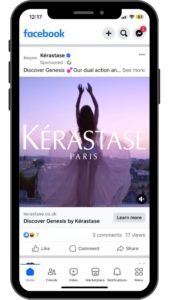
Instagram is also sliding into our DMs with enhanced sharing options such as highlighting previously shared posts within your inbox.
Despite Meta’s efforts to cater to the new demand for more social media messaging options, we are still unsure of the implications for such marketing. We know that users are still taking to their Feeds to discover new content, but using their DMs to share said content with others. This suggests that Feeds are still an ideal and preferred way for creators and brands to reach their audiences, but they should instead find ways to incorporate DMs and direct customer messaging rather than relying on direct engagement in app.
Meta will be running its second annual “Conversations” business event, whereby experts will present their latest tools and tactics for the purpose of helping brands utilise the various tools offered in DMs.
As of right now, this event is only accessible to those in Asia. This comes as no surprise seeing as close to 500 million of Meta’s users hail from India alone, making it a key focus region for the company’s evolving business messaging push.
Adding a string to Meta’s bow, Whatsapp has recently announced the launch of its Channels feature to the rest of the world.
Not to be confused with Instagram’s Broadcasting Channels, Whatsapp Channels allows users to receive updates from creators, organisations and brands through posts within a chat-like space. When a user follows a specific Channel they will be able to react with emojis to any updates posted, as well as turn on notifications to be notified whenever a new update is added to the chat.
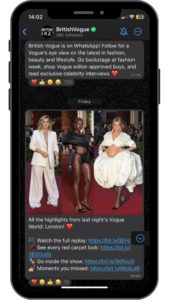
In keeping with its privacy-centric image, Channels are not visible to other followers and so whoever you choose to follow is entirely between you and yourself. So if you’re a secret Tottenham Hotspur fan, but aren’t quite yet ready to admit it to the world, Channels has your back!
TikTok
A surprising contender for the social media messaging surge is TikTok. The platform has big plans to become a messaging powerhouse. Ironically, it seems while most of the socialsphere were rushing to recreate TikTok’s vertical videos, creation tools and magic algorithmic Feed, TikTok was actually trying to build the rest of what makes those other apps work.
Parent company, ByteDance, has recently released a slew of job listings under a new team called TikTok Social to help facilitate the growth of this “powerhouse”. Though the job listings appear to be vague (aren’t they all?) TikTok’s plans for its new Social team are more than clear as they say “our team’s mission is to facilitate meaningful user connections through TikTok’s messaging experience, which is still in its infancy”.
What this attempt at becoming a leader within the social media messaging-sphere will look like, we’re not sure. Will it compete with Snapchat as the place where young people converse? Or will it lean into the group-chat style like Whatsapp?
TikTok has a history of overthrowing the incumbents and we’re sure the launch of its new TikTok Social team will do just the same.
Clubhouse
Even Clubhouse has entered the chat!
Following a mass redundancy, Clubhouse founders announced their pivot to building “Clubhouse 2.0”. Rather than dropping into audio conversations, users are now encouraged to join the newly revised “Chats” with people they know.
Taking on a Snapchat-esque style, Clubhouse will host smaller groups of friends who wish to communicate more privately through voice notes. The purpose of maintaining an audio element within the app is to ensure that users are not “passively listening to people speaking”, instead “it’s about talking with people and becoming real life friends with your friends’ friends and people you never would have met otherwise”, states Clubhouse.
How Clubhouse’s take on new messaging options will fare against the likes of TikTok’s and Meta’s, we can’t be sure. However, we are almost certain it won’t be able to return to the buzzy highs of 2021, when it became a multi-billion dollar company. Watch this space.
The benefits of messaging tools on social media
We’ve touched on how changes in messaging and interaction speaks to the behaviour shift in social media users, but what can it do for businesses?
While email has been a staple in the business world for decades, it’s becoming increasingly clear that social media messaging is a beneficial tool for customer interaction. It’s a generational thing. Millennials and Gen Z are spending the most money online as of 2023, so it only makes sense that their preferred methods of communication with businesses are catered to.
Where Millennials are considered the “in-between” generation, they are able to use any method of communication seamlessly. Gen Z on the other hand are internet wizards and have adapted to everything being “on-demand”. Oh, and they also hate answering the phone, so meeting them where they’re comfortable (in the DMs) is wise. For these core groups, communication via social media is beneficial. It keeps customers happy and the business afloat.
Facebook is aware of this. Small businesses on the platform are geared towards on-demand customer service through the options given via Messenger.
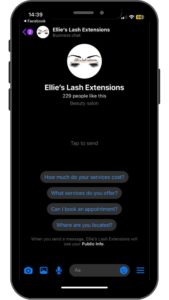
By providing discussion topics up front, the user need not waste any time typing out what they wish to say. Automation, coupled with the “chat style” of communication, makes the customer service experience seamless and fast and, in turn, increases satisfaction and puts Facebook in the lead regarding purposeful social media messaging.
The future of social media messaging
The future of social media messaging will present various options and opportunities. Users will be given the chance to explore more private messaging, while businesses will be able to tap into these new communication methods for marketing purposes.
On a surface level, this is promising. However, the move to sharing things more privately could severely hinder post engagement. Where users would once comment on the post itself – oftentimes tagging their friends – people are now forwarding the link via DMs instead. Over time this will reduce the frequency of commenting and risk hindering engagement levels.
Forwarded links once required a user to click through to view more context, but many platforms now offer previews. Like the commenting decline, this reduces the need for click throughs to a certain profile, potentially impacting the reach of many creators and brands.
While this isn’t ideal, it is the way Meta – and possibly everything else – is headed. To combat being swept away in the sea of private messaging, we encourage brands and creators to really take the time to understand how their audiences are interacting with them and how they’re discussing their products. What are their preferences? Do they interact often enough for a group chat-style implementation? Is direct social media messaging what they want?
All of these factors will shape your new social media messaging strategy and put you in good stead for the imminent shift in communication.
Our Influencer marketing agency and Social agency are located worldwide, with our agency network based in the USA, UK, UAE and China.
If you want to receive our industry insights, visit our Influencer Marketing & Social Media blogs here.
@ Socially Powerful
Social And Influencer Marketing News + Insights
Get in touch
We'll show you how to start powerful conversation, drive social engagement, build your brand, hit sales targets or meet other goals you have, wherever you are in the world.
Work with us




